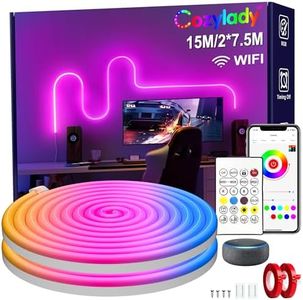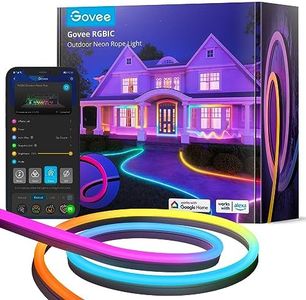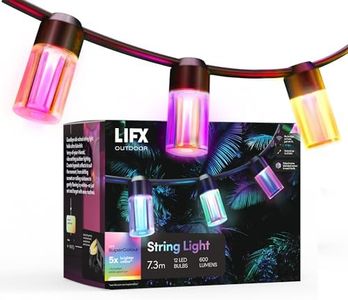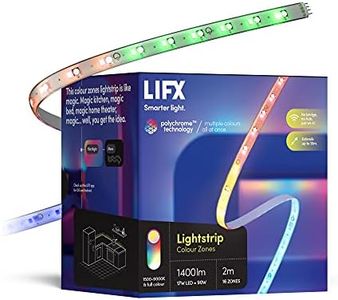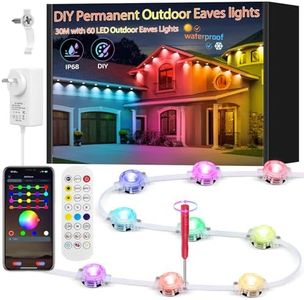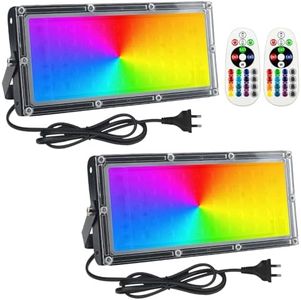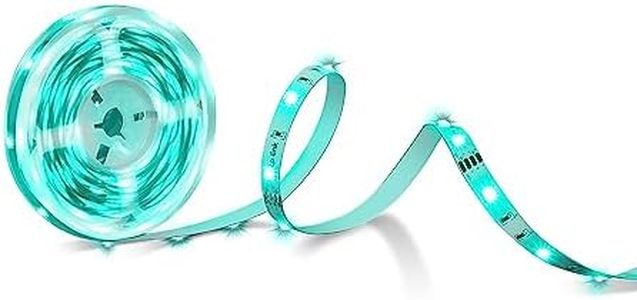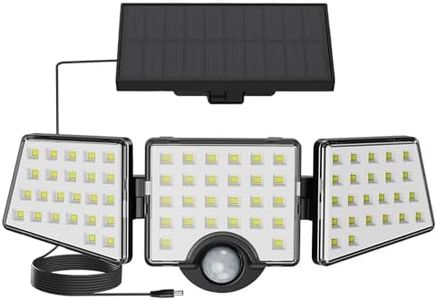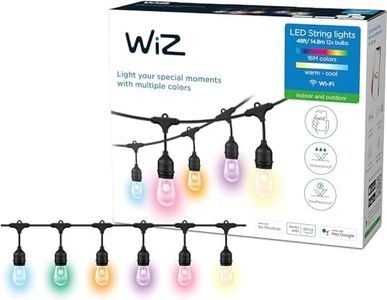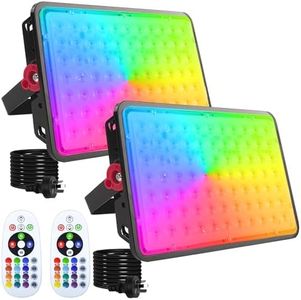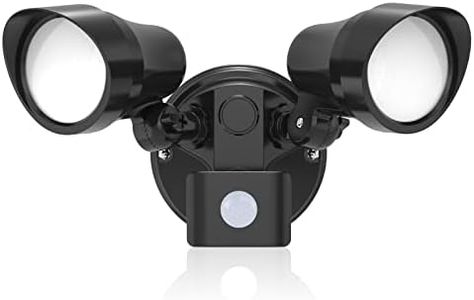We Use CookiesWe use cookies to enhance the security, performance,
functionality and for analytical and promotional activities. By continuing to browse this site you
are agreeing to our privacy policy
10 Best Outdoor Smart Lights
From leading brands and best sellers available on the web.Buying Guide for the Best Outdoor Smart Lights
Choosing outdoor smart lights can transform your outdoor spaces, making them safer, more beautiful, and much easier to manage. As you explore the options, it's important to focus on features that match your needs, such as where you'll install the lights, how you'll control them, and the kind of ambiance you want to create. The right decision balances convenience, energy efficiency, and durability for your climate and usage style.ConnectivityConnectivity describes how the smart lights talk to your phone, smart hub, or voice assistants. The most common types are Wi-Fi, Bluetooth, and Zigbee. Wi-Fi offers a wide range of features and remote access but may require a stronger connection to work well. Bluetooth is generally easy to set up but is limited to shorter ranges since your phone needs to be nearby. Zigbee often requires a separate hub but supports networks of many devices with good reliability. Think about your home setup and how far from your router or hub your lights will be; if you want full control from anywhere, Wi-Fi or Zigbee might be best, but for simple automation, Bluetooth can be enough.
Weather ResistanceThis spec tells you how well the lights handle the outdoor elements like rain, dust, snow, or heat. It's usually shared as an IP rating, such as IP65 or IP44. The first number shows protection from solids like dust, and the second is for liquids. Higher numbers mean better protection, so IP65 is more weatherproof than IP44. If you are placing your lights in a fully exposed area, go for the highest IP rating you can find; if the area is somewhat sheltered, a lower rating might still be safe.
Brightness (Lumens)Brightness, measured in lumens, tells you how much light the fixture provides. Lower lumens (100-300) are good for decorative or accent purposes, while medium lumens (400-800) fit general garden paths or patios. Higher lumen counts (over 900) are best for security or wide-area illumination. If you mainly want ambiance, you won’t need very bright lights, but for safety or clear visibility at night, choose a model with a higher lumen rating.
Color Control and TemperatureColor control means you can change the light’s color or switch between white shades (warm to cool). A standard white-only light is simpler but less versatile, while RGB or tunable white lets you customize the mood or match special occasions. If you enjoy changing your lighting to match events or seasons, go for full color control; if you prefer simplicity, a fixed white (warm for cozy, cool for modern look) will serve you well.
Smart IntegrationSmart integration refers to how well the lights work with other devices in your home, like Google Assistant, Alexa, or Apple HomeKit. Some lights work natively with popular platforms, while others may require apps or even a hub. If hands-free control and routines are important to you, check for compatibility with your preferred ecosystem. If you mainly use your phone for control, broader integration may not be essential.
Installation TypeInstallation type affects where and how you can set up the lights — options range from wall-mounted, staked in the ground, to string lights. You'll also see differences in power (wired vs. solar vs. battery). If you want a hassle-free setup and flexibility, solar or battery models are easy to reposition but may be less powerful. Wired lights need more effort to install but typically offer higher and more reliable brightness. Consider your technical comfort and the permanence you want before deciding.
Automation and SchedulingAutomation features allow your outdoor lights to turn on and off based on timers, schedules, or sensors (like motion or sunset triggers). Some offer built-in sensors, while others work through their app. If you have a regular routine or want to enhance security, scheduling and automation can be a major benefit. If you want to interact with the lights only occasionally, this feature might be less critical.
